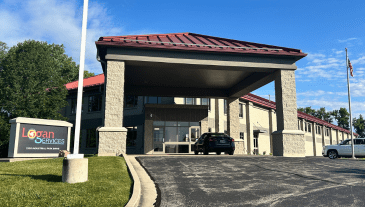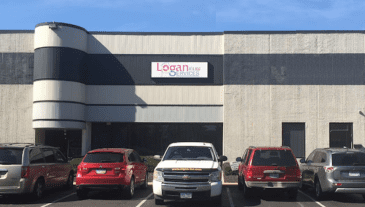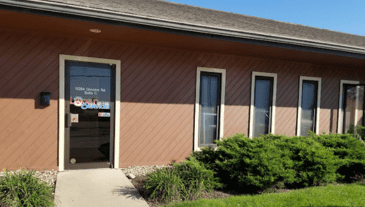Air conditioning ductwork provides the pathways for cooled air to flow throughout your home, providing comfort on hot days. However, if your ducts are damaged, you’ll feel the effects of reduced airflow, higher energy bills, inconsistent temperatures, and potentially indoor air quality issues.
In the following sections, we’ll equip you with deep knowledge of ductwork repair services, so you know exactly why it’s important and what professional technicians can do to get your HVAC system back to peak performance.
What is HVAC Ductwork?
Your home’s HVAC system relies on complex air conditioning ducts to deliver cooled air. Ductwork refers to the sheets of metal, fiberglass, or other materials formed into tubes that transport conditioned air from your HVAC components to vents located in different areas of your home.
Specifically:
- Supply ducts carry cooled air from your air conditioning unit into your home
- Return ducts to circulate warmer air back to your HVAC components
- Plenums function as central chambers where supply and return ducts converge
- Vents and registers diffuse the air into rooms
Proper functioning ductwork is imperative for maximizing the efficiency of your cooling system. When ducts become damaged, it interrupts normal air flow and functionality.
Signs You May Need Ductwork Repair
Your air conditioning ductwork plays a crucial role in quietly and invisibly regulating temperatures throughout your home. Unfortunately, gradual wear and tear, material deterioration, and random damage can undermine duct integrity over time. Because complications originate out of sight within walls and ceilings, problems often evade detection until functionality substantially declines.
Keep your system performing optimally by watching for these common indicators that your air conditioning ductwork likely needs repair:
- Reduced Airflow: Blockages or detached ducts constrict your system’s airflow output if vents blow noticeably weaker than normal. Every room requires balanced ventilation for ideal comfort.
- Inconsistent Temperatures: When some rooms turn substantially hotter or cooler than others regularly, duct leaks or obstructions are likely rerouting air conditioning unevenly. All areas require properly calibrated airflow.
- Higher Energy Bills: If your home lacks changes in usage but electricity costs keep mysteriously climbing, duct damage may force your system to overly strain meeting cooling demands.
- Stuffy, Stale Indoor Air: Stagnant air lingering inside damaged ducts permeates rooms with each circulation, contributing to degraded indoor air quality and stuffiness.
- Excess Dust or Debris: Unusual dust or dirt specks frequently blowing from vents indicate openings somewhere, allowing unconditioned attic or wall air to infiltrate your ductwork.
- Condensation Near Vents: Excess moisture pooling around vent outputs often signals air leaks, allowing cool air to meet warm surfaces.
- Strange Noises: Rattling, rumbling, or flapping sounds emitting from ductwork point to detached segments or loose debris churning within your failing airways.
Left unaddressed, minor ductwork issues turn into major efficiency losses and even indoor air quality concerns over time. Contact HVAC experts immediately if any of these duct damage warning signs arise. With swift response, professionals can implement repairs, restoring normalized system functionality.
Causes of Ductwork Damage
Air conditioning ductwork faces constant environmental stressors threatening infrastructure integrity over time. Prolonged exposure to seasonal temperature swings, moisture, pests, and normal aging degradation all contribute to declined duct functionality. Minor issues like disconnected ducts swiftly escalate into major efficiency losses without proper maintenance.
Common culprits damaging your home’s critical air ducts include:
- Aging and Normal Wear-and-Tear: Years of changing weather and accumulated debris deteriorate ductwork, especially low-quality systems installed under insufficient codes decades ago. Brittle, cracked ducts lose airflow.
- Poor Quality Materials: Many homes still rely on outdated vinyl, thin foil or fragile fiberglass ducts unable to withstand years of use. These ducts commonly tear or detach from fittings. Upgraded metal materials prove far more durable.
- Improper Installation: Incorrectly aligned air ducts that fail code requirements experience disproportionate strain, and connections loosen over time. Proper setup is essential.
- Pests Nibbling Through: Mice, squirrels, and insects nesting in warm crawl spaces easily chew through vulnerable vinyl and insulation surrounding ductwork, compromising integrity.
- Home Settling: As foundations naturally settle, shifting structures strain connection points between duct segments. The repetitive motions also loosen protective tape and insulation seals over time.
- Lack of Maintenance: Homeowners often overlook duct maintenance, allowing debris, age-related cracks, and disconnected fittings to spawn major blockages that restrict airflow.
- Blockages: Nesting rodents drag insulation materials they claw out into air ducts. Nearby foliage and excessive dirt/dust can also clog intake vents located in crawl spaces and attics.
Spotting issues early allows swift repair responses vital to restoring normal duct functionality before problems cascade into costlier replacements.
Types of Ductwork Repairs
Whether you rely on rigid metal or flexible ductwork distributing comfortable air, all varieties develop issues over the years, requiring specialized repair solutions by experienced technicians. Different ductworks fail in distinct manners, necessitating customized response protocols.
Common air duct repairs our professionals perform include:
- Supply Duct Leaks: HVAC pros will rejoin separated sheet metal supply ducts carrying cooled airflow using metal sleeves and foil sealant. Tears in flex ducts instead get patched using mesh fabric and durable tapes.
- Return Grill Blockages: Technicians clear all debris obstructing return duct intakes to restore open airflow pathways back into climate systems.
- Plenum Leak Sealing: Since centralized plenums converge airflow, technicians thoroughly seal all active leaks using metal binding and long-lasting adhesives to prevent further conditioned air loss.
- Riser/Crossover Detachments: Any separated riser or crossover flex ducts diverging air between floors receive reinforced realignment and permanent adhesion back into duct boots feeding central air passageways.
- Damaged Terminations: They replace any degraded duct boots hindering the diffusion of supply or return airflow through vents or registers using sheet metal fittings secured firmly into existing infrastructure.
Addressing each unique ductwork repair situation requires one-on-one inspection and custom response plans tailored to your home’s distinct duct system and damage characteristics.
Read our guide on DIY tips for fixing issues in your AC unit for more information.
Typical Repair Process
Restoring your ductwork functionality requires methodical repair protocols utilizing industry best practices. Credible HVAC companies adhere to structured repair processes, ensuring issues get fully diagnosed and resolved correctly the first time.
Technicians perform ductwork repairs properly by:
- Initial Evaluations: Technicians first conduct full assessments of the entire duct infrastructure using visual inspections, resistance measurements, and smoke tests revealing leakage volumes. These diagnostics inform tailored repair approaches.
- Access Creation: Professionals carefully open necessary walls/ceilings to expose damaged ductwork for direct servicing based on assessment findings. They isolate repair zones, protecting surrounding infrastructure to enable repairs.
- Specialized Repair Techniques: According to custom needs, the repair team selects the best approaches, whether that involves patching deteriorated sheet metal ducts, sealing major disconnected joints with mesh sleeves/adhesives, replacing entire damaged sections with new fitting alignments, or deconstructing contaminated ducts.
- Insulation Replacement: Where existing barrier coatings get disturbed during repairs, technicians reestablish critical insulation, preventing external condensation, using proper wraps aligned with industry standards for the duct types.
- Verification Testing: Once repairs are complete, professionals re-run airflow measurements and leakage evaluations, making any final adjustments necessary to confirm adequate system airflow volumes and integrity suitable for peak operational efficiency.
Rushing ductwork repairs often disguise underlying issues that resurface in the future. Prioritizing completeness the first time optimizes restored heating and cooling functionality for years of consistent comfort and energy savings in your home.
For pricing information, read our guide on factors influencing AC duct repair costs.
Why Proper Ductwork is Important
Since air conditioning ductwork resides unseen within walls and attics, many homeowners do not give these metal passageways much consideration or realize their significance. While operating quietly out of sight, properly engineered ductwork, in fact, makes all the difference in helping heating and cooling equipment maintain livable interior environments.
When infrastructure damage undermines original airflow distribution designs, households suffer in the form of:
- Reduced Efficiency: Any changes restricting intended air movement patterns place additional strain on HVAC components trying to achieve desired temperatures, driving up energy usage and shortening equipment lifecycles.
- Higher Energy Bills: Duct leaks forcing systems to overcompensate, regulating uneven air and temperatures, contribute to substantially higher annual energy costs. Successful repairs notably cut usage.
- Discomfort: Damaged ducts that are unable to cool rooms evenly create hot and cold zones that leave certain areas stuffy while occupants in other rooms feel chilled.
- Repeated Failures: Duct issues left unresolved, such as detached segments circulating debris or insulation fibers, further degrade system components through unnecessary wear.
- Poor Air Quality: Large duct leaks allow outdoor pollutants and unchecked moisture into indoor air instead of clean, filtered air from central units.
Homeowners maintain stable, economical HVAC functionality by prioritizing periodic duct examinations and swift repair responses at the first sign of issues. Contact qualified technicians to protect your home’s comfort and air quality.
The Logan Difference
At Logan Services A/C, Heat & Plumbing, we have performed residential HVAC services with care and dedication in the Cincinnati, Columbus, and Dayton areas since 1969. When it comes to air conditioning ductwork repairs, the Logan Difference means you receive prompt, thorough, and lasting solutions from start to finish.
Our team wants customers to understand duct infrastructure challenges within their homes fully. We take time to explain repair options and describe how specific solutions will restore comfort. Technicians then utilize specialized techniques and quality materials to correctly patch, seal, or replace your ductwork the first time. We perform services following strict industry standards, so you enjoy longstanding results.
We also take pride in handling any furnace or AC unit brand for necessary duct repairs or routine maintenance with the excellent customer service we are known for. Our values focus on enriching client and employee experiences alike. You’ll find our repair processes professional yet relationship-driven as we treat you like family.
Contact Logan today to schedule a comprehensive duct inspection and repair any issues, restoring clean, even air circulation throughout your entire home. Our service makes the difference in helping households maintain stable, money-saving HVAC functionality for years ahead.
Explore solutions for ductwork repair at home.
Frequently Asked Questions
Why does my home feel stuffy even when the air conditioner is running?
Faulty ductwork that has become disconnected or developed major leaks can undermine your system’s cooling output, leaving rooms feeling stuffy and stagnant. Professional duct repairs properly reseal airways.
What causes ductwork to become damaged over time?
Common culprits include normal aging, pests nibbling through fragile materials, improper original installations, foundation settling shifting pipe alignments, and lack of periodic maintenance.
What types of ductwork do repair technicians service?
Experts work on all duct infrastructure, including supply and return airways, central plenum openings, ramps between floors, dampers, and diffusers spreading air through vents.
How do professionals access damaged ducts running through walls and ceilings?
Following thorough assessments pinpointing damage locations, technicians carefully create small access openings and temporarily move materials to reach the affected ductwork components requiring direct repairs.
Can I repair duct issues myself, or should I call HVAC professionals?
Attempting DIY repairs risks overlooking underlying issues or improper sealing, leading to repeated failures. Licensed experts have specialized tools, materials, and experience vital to executing lasting, optimized repairs.




















